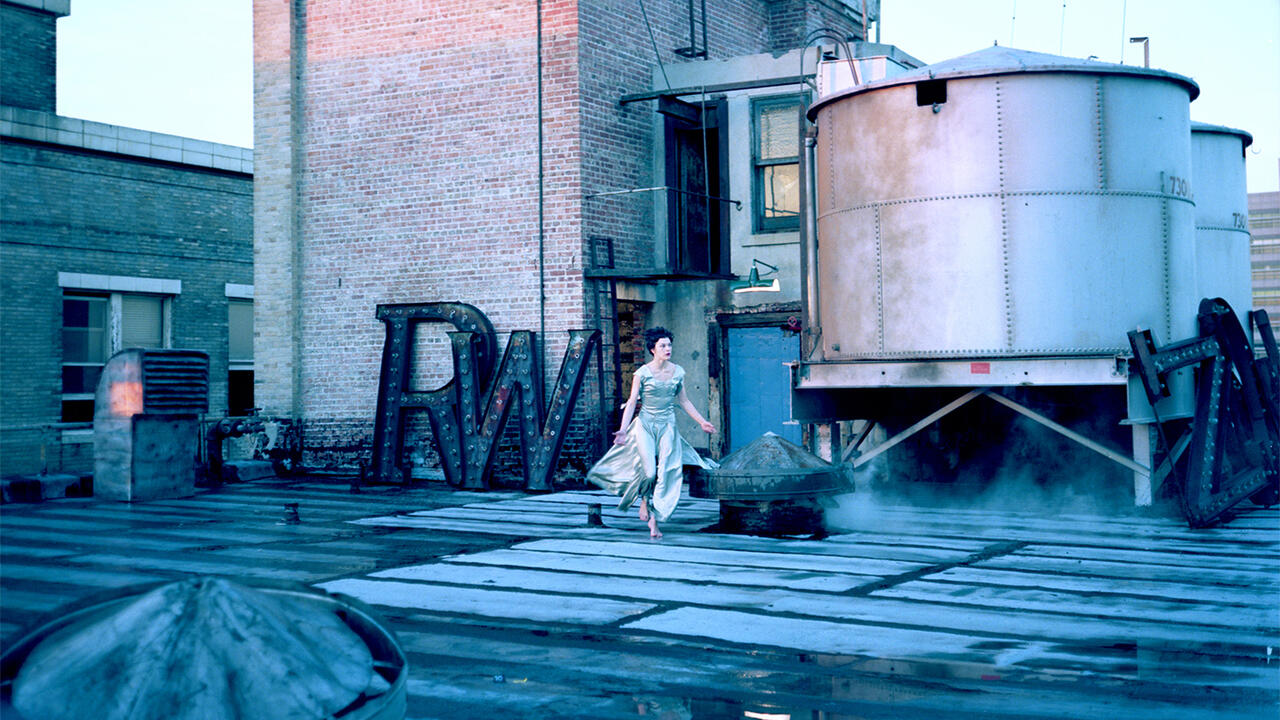In Many Ways the Exhibition Already Happened
ICA London, UK
ICA London, UK

The line dividing the visual arts from the wider visual culture of design and applied art is no longer an issue - it's a barrier that collapsed a long time ago. These days we like ideas about community, democracy and accessibility. 'In Many Ways the Exhibition Already Happened' brought together a group of contemporary French graphic designers, architects and visual artists who each contribute, with distinctive and individual approaches, to a common, vaguely social form of aesthetic production. Nearly all of these works had been seen before (hence the title), but here they were assembled in the context of interdisciplinary collaborations.
The show opened with Pierre Huyghe's Les Grandes Ensembles (1994-2001). A filmed model of two tower blocks in some supposedly benighted Parisian suburb, it's a beautifully constructed and observed concrete version lashed by rain and swathed in fog on a bleak winter evening. The lights in each apartment flick on and off with increasing speed, in sync with a bowel-pounding soundtrack of screeching guitars provided by the Finnish group Pansonic. The scene is one of desolation; there's not a soul around on the street and there's a sense that even the apartment blocks themselves have been vacated. The sight of these dreary symbols of failed Modernism engaged in some form of anxious communication was mysterious and rather moving.
Philippe Parreno's film Credits ... Michel Amathieu, Djamel Benameur, Jacques Chaban-Delmas, James Chinlund, Maurice Cotticelli, Hubert Dubedout, François Doumoulin, Ebezer Howard, M/M (Paris), Pierre Mendes-France, Mico Neyrpic, Alain Peyrefitte, Inez van Lamsweerde & Vinoodh Matadin, Annaléna Vaney, Angus Young (1999) is set in a similar location to Huyghe's piece. The work deals with the memories of the people mentioned in its title. It's a distillation of intersecting suburban experiences from which Parreno has recreated a wistfully dysfunctional miniature landscape, depicting what appears to be the neglected terrain surrounding mid-1970s public housing projects. This time twigs stand in for leafless trees, their branches festooned with plastic bags, which billow in the breeze (though they're a little more colour co-ordinated than is the norm). The sky is red with the glare of a nearby city and a light mist hovers in the air. Again there is a screeching soundtrack, but as the film ends and the lights went up a photograph by Inez van Lamsweerde and Vinoodh Matadin was revealed, hung, for no apparent reason, on an adjacent wall. It depicts a weirdly impish boy with his tongue hanging out (part of Philippe Parreno's installation Credits, 2001)
A foyer separated the two installations - a strange space, as claustrophobic as any fin de siècle velvet-swathed salon. The floor was carpeted with rather off-putting greyish-brown carpet tiles, the walls papered with a vomitous pixelated flock and hung with eccentrically detailed posters: advertisements for fashion, music and theatre, by the graphic design team M/M (some of them in collaboration with van Lamsweerde and Matadin). The 'scheme' is aggressively decorative, a deliberate overload of visual information, and goes beyond the polite tyranny of tastefulness. The room was dominated by a collaborative work by Huyghe, M/M and Parreno. Untitled (Lamp Prototype) (2001) is a circular seating pod in moulded plastic - the sort of thing that you used to see in railway stations or 1970s shopping plazas. Tendrils of wire sprout from its centre, powering a sprawl of gourd-like lamps dangling from the gallery's low ceiling. A milky glow emanates from the membranous lampshades, each one connected to the others by umbilical flexes to give the work a faintly cybernetic air - Art Nouveau in space.
The tone of the ICA's upper galleries was rather more subdued. 06:00 PM (2000), by Huyghe and Parreno, is a blue carpet that covered the entire front space. The pattern of afternoon light filtered by leaves through the tall windows of a different room is woven into the carpet's fabric, a sweetly fugitive moment preserved in nylon.
The last section of the exhibition dealt with the work of the architects R&SIE: François Roche/Stephanie Lavaux, who have collaborated with Huyghe and Parreno on a number of buildings. Roche and Lavaux's architectural projects range from a Swiss farmhouse with adjacent cow sheds to a cultural centre in Venice's Arsenale, a structure that seems to thrive on the ebb and flow of the lagoon while the rest of the city collapses around it. Their work combines practicality with a strange form of organic poetry; buildings appear to dissolve into the surrounding environment. There is an optimism about Lavaux and Roche's work; it is endlessly inventive and unfettered by any religious adherence to style.
Perhaps the exhibition's concerns aren't particularly new, but there was something refreshing about it. Maybe it's all a little mystical - but whatever it is, it provides its own quiet rewards.
























